The traveler arriving from Fiorenzuola d’Arda, from Lugnanano or from Bacedasco, will immediately be attracted by the crenellated towers of Castell’Arquato, by that “beauty that mysteriously reveals itself at the abrupt turn of the access roads to the village, as in the fairy tales of fantastic castles that enchanted us as children.” Architect Corrado Capezzuoli, who was later superintendent of Ravenna, spoke in these terms about Castell’Arquato, and this is how he began his description of the village in an article written in 1928 for the magazine Cronache d’Arte. The charm of this place located among the hills of the Arda valley has, moreover, remained unchanged for centuries: it reveals itself almost as a surprise to those who arrive from the plains and see the town perched on the top of a hill, identical to itself since the earliest times.
We can try to trace the origins of its history back to theearly Middle Ages, and we even have an official date of birth, if you will: March 13, 760, the year in which a document is written about finibus Castri Arquatense and in which the village is mentioned for the first time. We do not know the reason for the name, although legend would like to trace the etymon back to the name of a Roman knight, a certain Caius Torquatus, who is said to have given rise here to a castrum of which, however, no evidence remains to give us concrete evidence. More likely, however, the name derives from the quadratum, the shape of the first castle that rose on the top of the hill, or from the “arched” shape of the village that was arranged around it. We know that from 789 Castell’Arquato was subjected to the rule of the bishops of Piacenza, under whom it remained until 1220, the year in which the village broke free from the bishop’s power, obtaining a certain autonomy, but still remaining linked to the municipality of Piacenza (the podestà, in fact, was appointed by Piacenza). Castell’Arquato then came under Visconti rule, then became again a fief of the Scotti family as it had been at the end of the 13th century, and then, in 1414, returned again under the Visconti (so much so that, from 1416 to 1470, it changed its name to “Castel Visconti”), and then came under the Sforza family and followed from there the fate of the Duchy of Milan until 1707, when it passed to the Duchy of Parma and Piacenza.
Its position at the mouth of the Val d’Arda made Castell’Arquato a fortified village with a significant strategic role in the Middle Ages, so much so that the period between the 14th and 15th centuries was the one of greatest development, and even today those who walk its alleys or stop in its main square, the monumental Piazza del Municipio, will find themselves immersed in a context that, from that era onward, has undergone very few changes. It is a village that not only has not undergone substantial alterations in its urban layout or architectural structures, but neither has it suffered from the impact of mass tourism, a phenomenon unknown in these parts: as a result, Castell’Arquato preserves, in addition to its ancient appearance, a silence, a calm, and a slow lifestyle that have few other equals in villages that have been so well preserved since the Middle Ages: today, it is a reality that continues to live off its agricultural and artisan vocation.
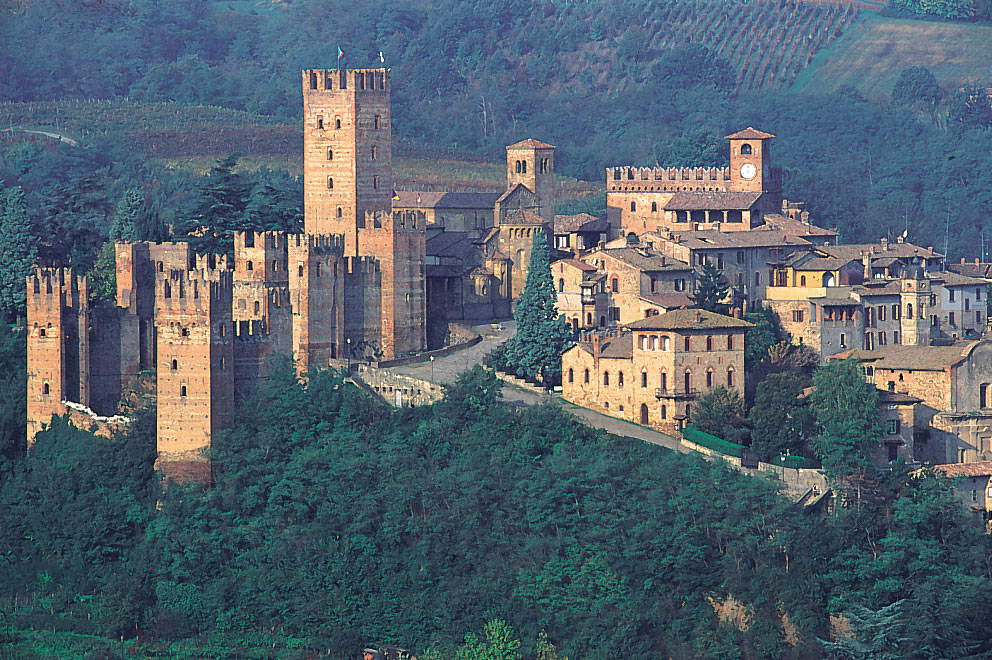 |
| View of Castell’Arquato |
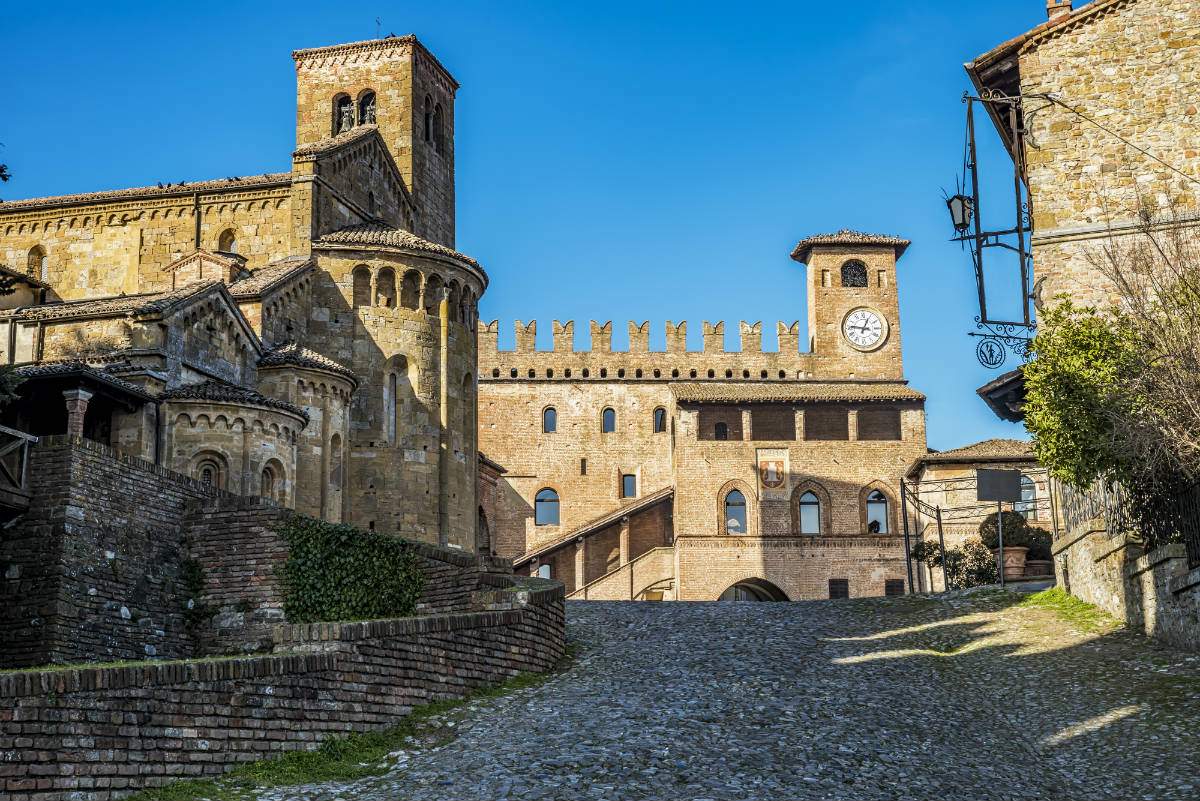 |
| Castell’Arquato, Town Hall Square |
The visit can start right from Piazza del Municipio, the scenic heart of Castell’Arquato: on one side, the traveler finds the noble Palazzo del Podestà, built in 1292 by the powerful feudal lord Alberto Scotti, lord of Piacenza between 1290 and 1313 (and between 1302 and 1304 also lord of Milan). The main body of the palace dates back to that period: after which, in the 15th century, in the century that saw a new flowering of the town, the Loggia dei Notari, or the advanced body that still characterizes the facade of the building, and the wing overlooking the square were added. The very special external staircase leading to the upper floors already existed in the 13th century, but the roof and parapet are later additions. Opposite the Palazzo del Podestà is the apse of the collegiate church of Santa Maria, one of the most significant Romanesque churches in all of Emilia: it appears that a house of worship existed on this site as early as the eighth century, but the present collegiate church was consecrated in 1122. A three-aisled church with a 13th-century bell tower, it captivates visitors not only for the grandeur of its medieval architecture (although remodeled in the early 20th century, especially in the apse area), but also for the splendor of the 15th-century frescoes in the chapel of Santa Caterina, rediscovered in 1899. We do not know the name of the author of these frescoes, but it is certain that he was a painter capable of producing texts of high quality.
Leaving the square, one encounters the bulk of the Rocca Viscontea, the construction of which was begun in 1342, when Castell’Arquato was under the rule of Luchino Visconti. It is believed that the Rocca rises on what were the foundations of the Roman castrum: what is certain is that it took seven years to complete the fortress, from whose towers it was possible to control all the movements that took place in the valley. It is accessed, as per typical imagery about medieval castles, through a drawbridge that crosses the moat surrounding the Rocca: today it is home to a Museum of Medieval Life set up inside the keep, the keep that has several rooms inside it. Moreover, the museum housed in the Rocca is not the only one in the village: one might be surprised to learn that there are as many as four in this town of just four thousand five hundred inhabitants, considering also the hamlets on the plain. On the premises of the collegiate church, one can visit the Collegiate Museum, which houses a collection of sacred art from the church and other houses of worship in the area. Then there is the Cortesi Geological Museum, founded in 1927: it is an important collection of fossils that was originally housed in the Palazzo del Podestà, then moved in 1961 to the Torrione Farnesiano (the imposing 16th-century military construction whose origins, however, are unclear), and then in 1990 to the 16th-century Santo Spirito Hospital, its current home. Finally, music lovers can visit theLuigi IllicaMuseum, dedicated to the playwright and librettist Luigi Illica, a native of Castell’Arquato: he was among the greatest of his era and together with Giuseppe Giacosa wrote the librettos of some of Giacomo Puccini’s most famous operas, such as Tosca, Bohème, and Madama Butterfly, while on his own he wrote, among others, Pietro Mascagni’sIris and Le Maschere.
A walk through the alleyways of the village cannot overlook Castell’Arquato’s other important historical landmarks, such as the Palazzo del Duca, another building dating back to the 13th century and in particular to the time of Alberto Scotti, or what remains of the ancient city walls (the Porta di Monteguzzo or the Porta di Sasso, for example: these are the only two surviving gates of the village). Pausing from time to time to appreciate the views of the woods and vineyards of the Val d’Arda, to look at the stones that have been observing travelers for centuries as they make their way along the village’s alleys, or the ancient houses that inspired Luigi Illica when he found himself writing the lyrics of La Bohème. Even Giosuè Carducci seems to have stayed in Castell’Arquato, a guest of Illica. Some 20 years ago, an ode, Sulla piazza di Castell’Arquato, had also surfaced, which was attempted to be attributed to the poet, without success: too tenuous a foothold, according to Carducci’s critics. It was 1882, when that anonymous text was written: we still do not know who wrote those verses praising the “superb athletic forms” of Castell’Arquato that “s’ergon silenziose guardando da secoli a valle,” but whoever it was surely must have seen a village very similar to the one we are still given to admire today.
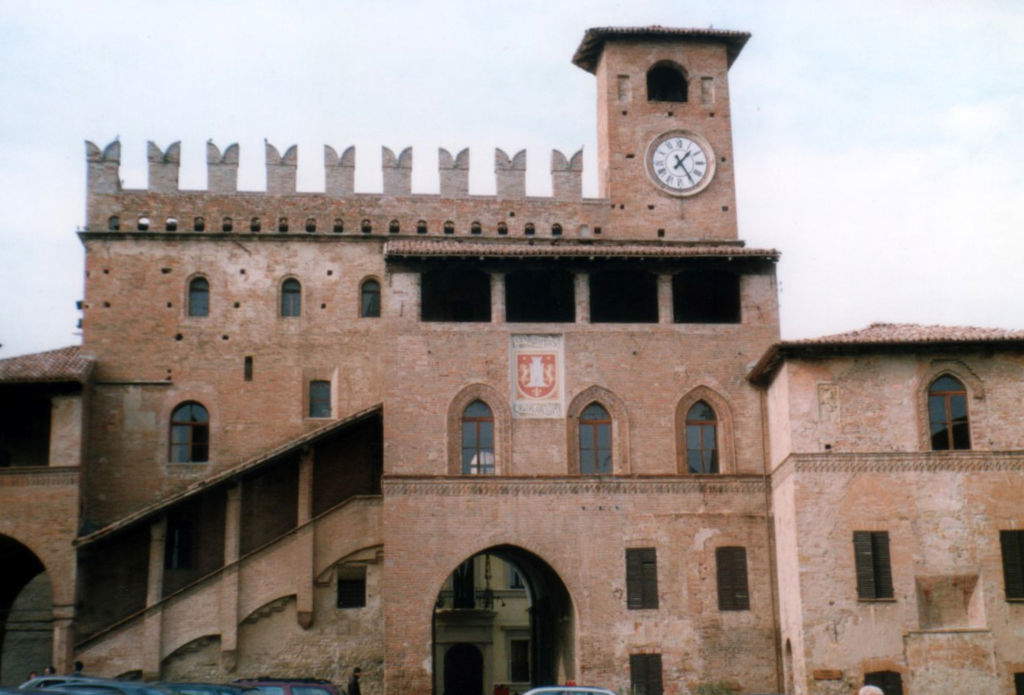 |
| Palazzo del Podestà |
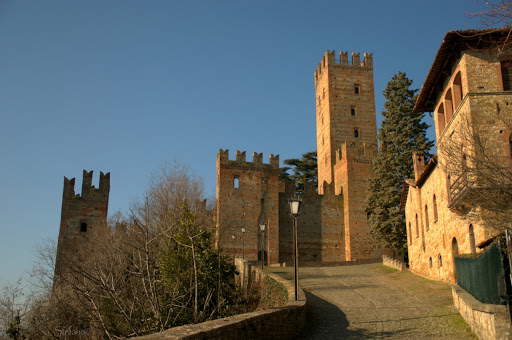 |
| The Rocca Viscontea |
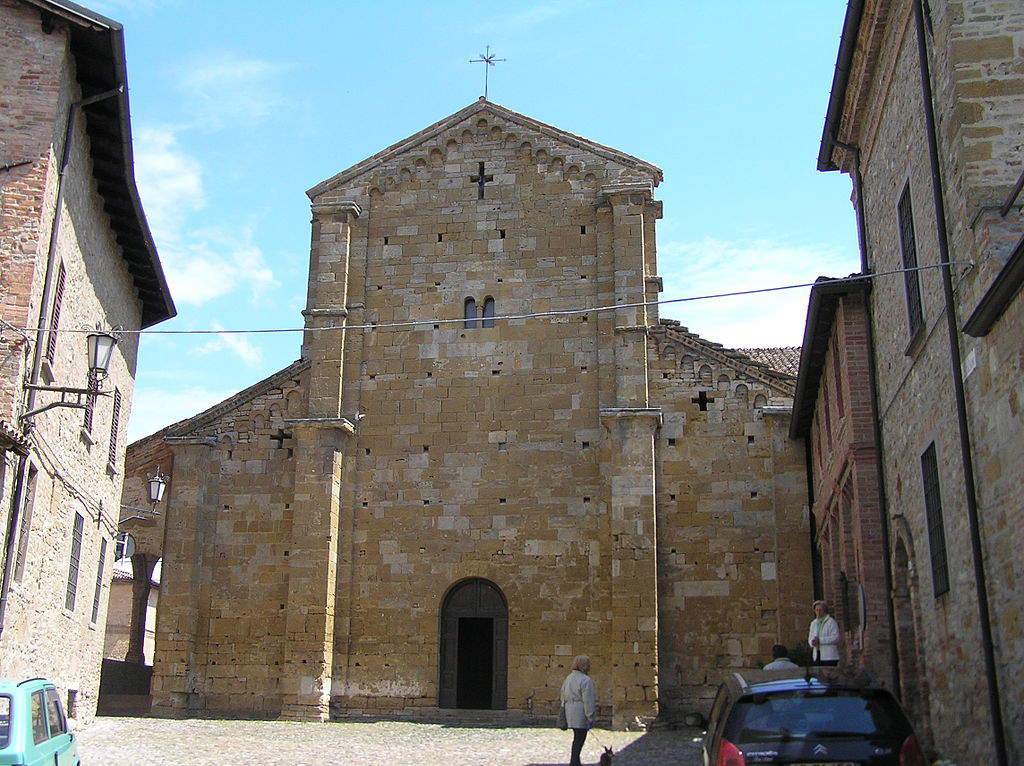 |
| The collegiate church |
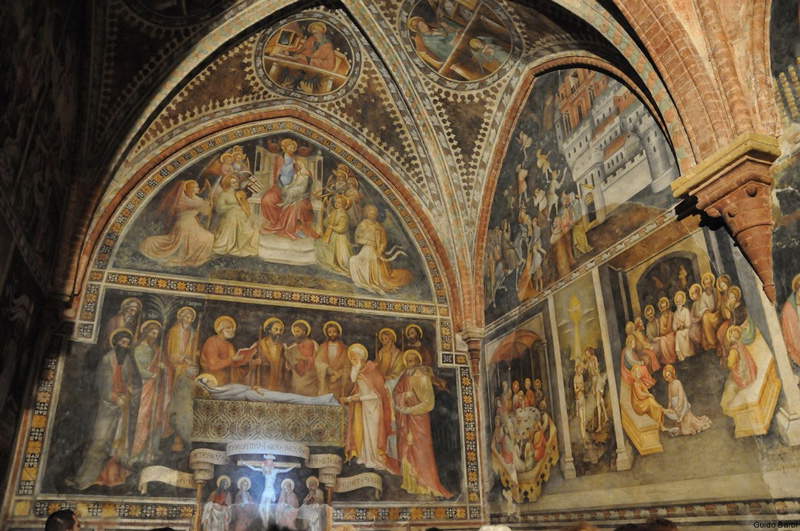 |
| The chapel of Santa Caterina |
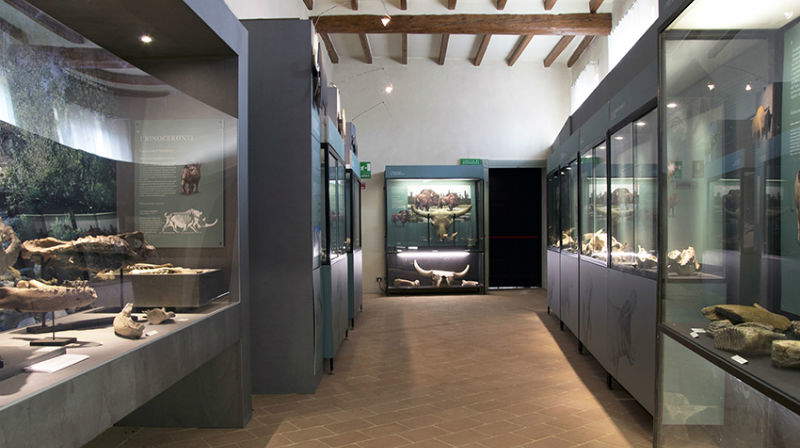 |
| The Cortesi Geological Museum |
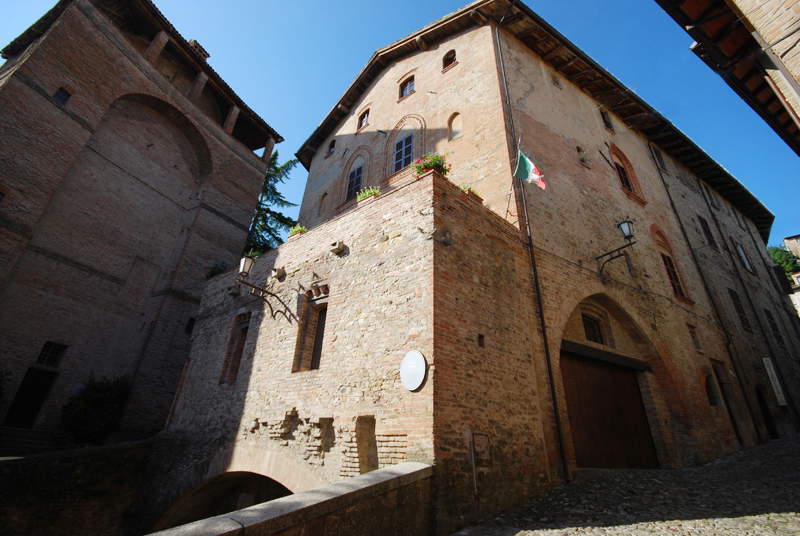 |
| Duke’s Palace. Ph. Credit Massimo Telò |
 |
| On the square of Castell'Arquato. A journey through the Middle Ages in Emilia |
Warning: the translation into English of the original Italian article was created using automatic tools. We undertake to review all articles, but we do not guarantee the total absence of inaccuracies in the translation due to the program. You can find the original by clicking on the ITA button. If you find any mistake,please contact us.